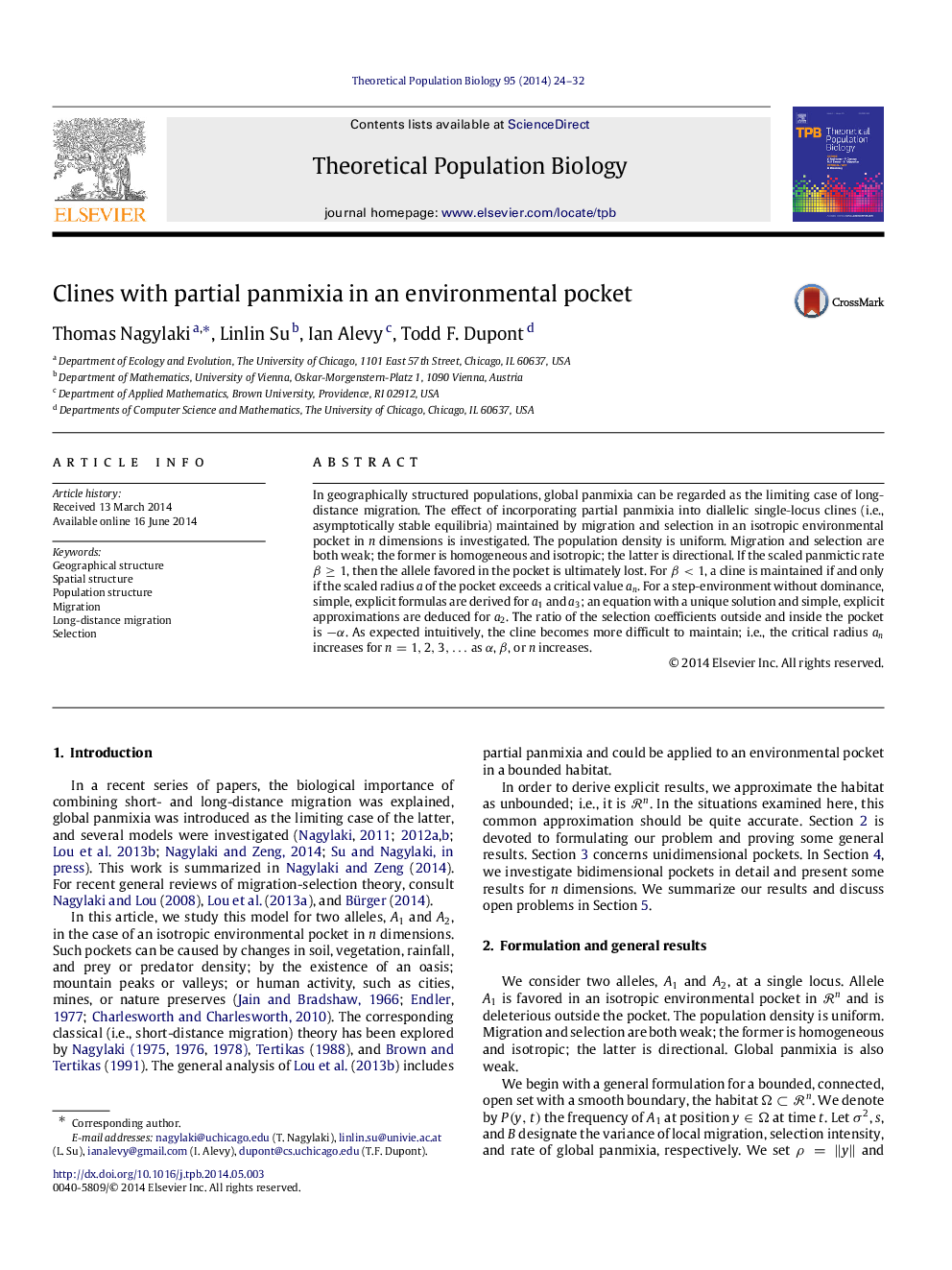| Article ID | Journal | Published Year | Pages | File Type |
|---|---|---|---|---|
| 6372369 | Theoretical Population Biology | 2014 | 9 Pages |
Abstract
In geographically structured populations, global panmixia can be regarded as the limiting case of long-distance migration. The effect of incorporating partial panmixia into diallelic single-locus clines (i.e., asymptotically stable equilibria) maintained by migration and selection in an isotropic environmental pocket in n dimensions is investigated. The population density is uniform. Migration and selection are both weak; the former is homogeneous and isotropic; the latter is directional. If the scaled panmictic rate βâ¥1, then the allele favored in the pocket is ultimately lost. For β<1, a cline is maintained if and only if the scaled radius a of the pocket exceeds a critical value an. For a step-environment without dominance, simple, explicit formulas are derived for a1 and a3; an equation with a unique solution and simple, explicit approximations are deduced for a2. The ratio of the selection coefficients outside and inside the pocket is âα. As expected intuitively, the cline becomes more difficult to maintain; i.e., the critical radius an increases for n=1,2,3,⦠as α, β, or n increases.
Keywords
Related Topics
Life Sciences
Agricultural and Biological Sciences
Agricultural and Biological Sciences (General)
Authors
Thomas Nagylaki, Linlin Su, Ian Alevy, Todd F. Dupont,
